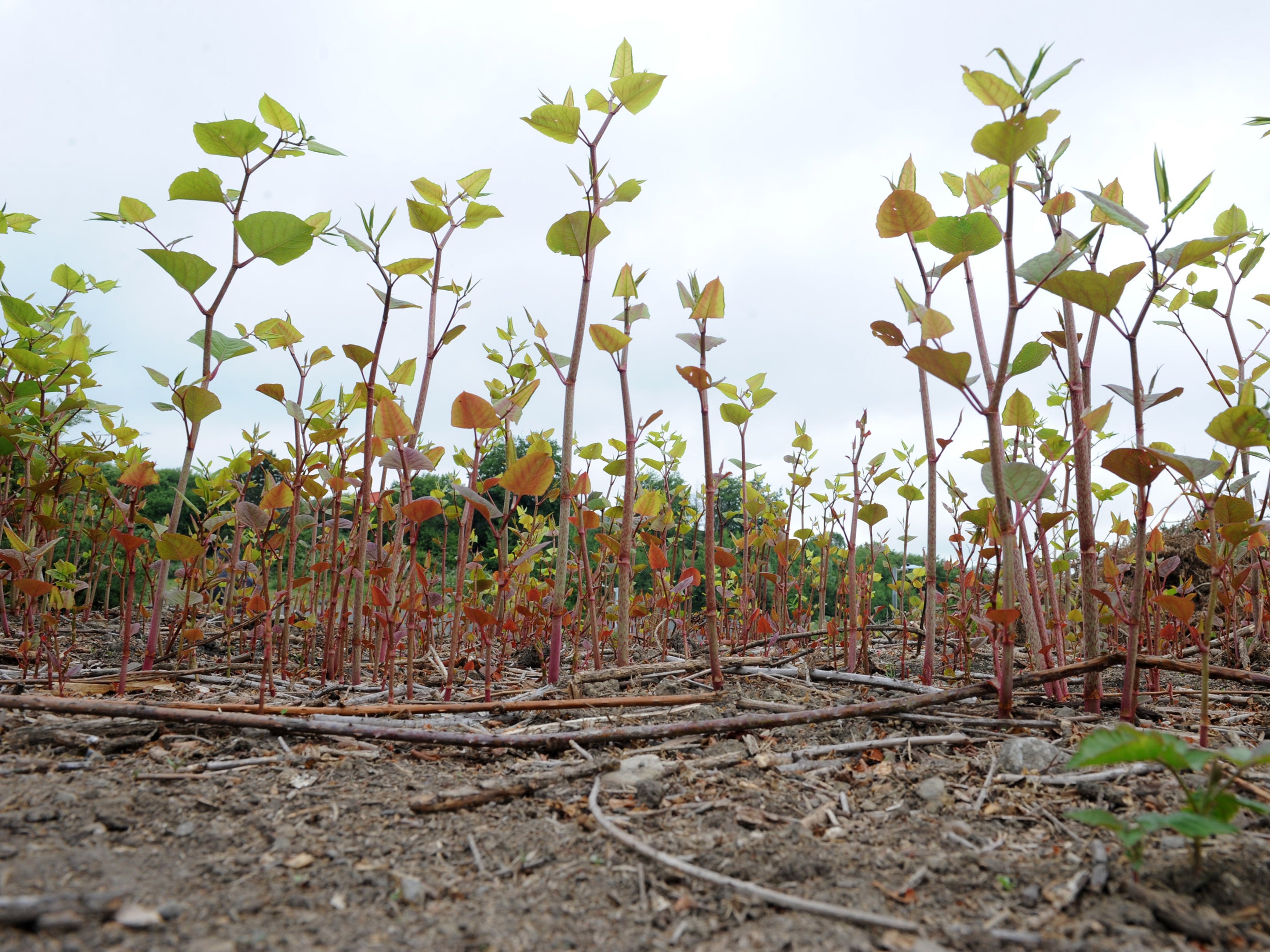Japanese knotweed: What does it look like and why is the weed so destructive?
Notoriously invasive plant species can drive house prices down by as much as 10 per cent

Your support helps us to tell the story
From reproductive rights to climate change to Big Tech, The Independent is on the ground when the story is developing. Whether it's investigating the financials of Elon Musk's pro-Trump PAC or producing our latest documentary, 'The A Word', which shines a light on the American women fighting for reproductive rights, we know how important it is to parse out the facts from the messaging.
At such a critical moment in US history, we need reporters on the ground. Your donation allows us to keep sending journalists to speak to both sides of the story.
The Independent is trusted by Americans across the entire political spectrum. And unlike many other quality news outlets, we choose not to lock Americans out of our reporting and analysis with paywalls. We believe quality journalism should be available to everyone, paid for by those who can afford it.
Your support makes all the difference.An accountant who sold a £700,000 property in southwest London has been successfully sued by the buyer after it emerged the garden was overrun with Japanese knotweed.
Jeremy Henderson sold the three-bedroom house in Raynes Park to furniture designer Jonathan Downing in 2018.
Mr Downing duly discovered the presence of the invasive plant and sued for damages, alleging that Mr Henderson had lied when he answered “no” on a form asking whether he knew of its presence.
The accountant argued that he “reasonably believed” he was telling the truth when he completed the document but ultimately lost the case, with Judge Jan Luba KC awarding £200,000 in costs and damages.
Japanese knotweed is notorious for its habit of growing between brickwork and tarmac, ruining homeowners’ driveways, patios and drains and even lowering house prices by as much as 10 per cent, also representing a scourge to public parks and golf courses.
It is famously difficult to remove, having to be disposed of at landfill sites alongside man-made household refuse.
The plant is currently in its spring growth phase after winter hibernation and is described by the Royal Horticultural Society as “a fast-growing and strong clump-forming perennial, with tall, dense annual stems”.
Gardeners can identify the weed by its purple or red asparagus-like shoots emerging from the ground, which quickly grow into lush green shrubs with heart or shovel-shaped leaves and pink-flecked stems.
In May 2021, horticultural consultants Environet created a searchable heat map to track British hot spots, identifying north west England, Wales, the Midlands and London among the most overrun locations.
Bolton in Greater Manchester came top in the list of towns infested with the weed at the time, followed by Bristol, St Helens, Cardiff and Blackburn.
The company’s research suggested the weed knocks £20bn in value from UK house prices every year and found that £166m is spent annually on removal work, although the British government estimates that £1.5bn would need to be spent to entirely eradicate the species from the UK.
“With the stamp duty holiday extended and lockdown restrictions beginning to ease, the property market is busier than ever - but failing to carry out the appropriate checks for knotweed can turn out to be an expensive mistake,” comments the company’s founder and managing director Nic Seal.

“Despite its fearsome reputation, with professional help, the plant can be dealt with and the value of a property largely restored. I’d urge anyone buying or selling a property, or homeowners wishing to preserve the value of their home, to be vigilant for signs of spring growth.”
In his 1996 book Flora Britannica, naturalist Richard Mabey explains that the species was first introduced to Britain by the Victorians in the 1840s when a specimen was imported by Kew Gardens.
Japanese knotweed was briefly in fashion, a craze encouraged by the respected gardening writer William Robinson.
“Its dense sheaves of canes (up to six feet tall), heavy, heart-shaped leaves and spires of tiny white flowers suited the Victorians’ austere taste,” Mr Mabey explains. “[But] when their formidable powers of colonisation were realised they were thrown over the garden wall onto railway embankments and rubbish-tips.”
From here, the plant spread across the country over the coming decades, with botanists reporting sightings in the wild in London in 1900, in Exeter by 1908, in Suffolk by 1924, in West Yorkshire by 1940s and as far north as Northumberland by the 1950s.

It was nicknamed “Hancock’s curse” in Cornwall after an unfortunate gardener whose grounds succumbed to it while conspiracy-minded Hampshire residents blamed the British military for its inadvertent spread.
But Japanese knotweed has not always been so hated, however, with Mr Mabey citing a Devon villager who made pan-pipes from its stalks, cooks foraging for it as a vegetable it in the United States and Wales and the plant winning praise for bringing an “Amazonian luxuriance” to the banks of the River Don in industrial areas of Sheffield.
He acknowledges though that it “is now officially regarded as the most pernicious weed in Britain, and it is illegal to plant it deliberately in the wild. Its rampaging spread in the 1970s and 80s is regarded as a parable of the dangers of casually introducing alien plants into the countryside.”



Join our commenting forum
Join thought-provoking conversations, follow other Independent readers and see their replies
Comments